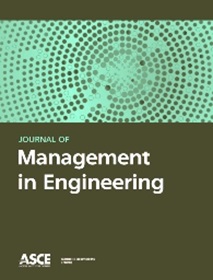为另一场危机做准备:2007-2009年全球金融危机期间和之后美国建筑业和企业绩效的经验证据
IF 5.3
1区 工程技术
Q1 ENGINEERING, CIVIL
引用次数: 1
摘要
尽管建筑业与经济之间有着密切的联系,但人们对一个国家当前的经济状况如何影响建筑业和公司业绩知之甚少。在经济传染文献的基础上,本研究实证调查了2007-2009年全球金融危机(即当前经济状况)对美国建筑业和企业绩效的影响。本文利用2005年1月1日至2012年12月31日美国市场每日股票指数、39家美国建筑公司的每日股价和年度财务数据,跨越危机前、危机前和危机后三个时期,对传染、危机严重程度指数和学生t检验的联合检验进行了分析。纵向经验数据涉及每家公司和美国股票市场共2084个数据点,证实了危机对美国建筑业的广泛负面影响,其模式与重大事件(如雷曼兄弟破产)的发生一致,并且这种负面影响持续到危机后时期,严重程度较低。在该行业内,高度市场化的住宅建筑公司比建筑和工程公司受到危机的影响更大。这些时间序列趋势和模式支持了强大的建筑-经济联系。此外,财务状况(即盈利能力、流动性、杠杆率和周转率)较差的建筑公司,特别是流动性状况较差的建筑公司,可能更容易受到危机及其残余影响的影响。因此,为了生存、恢复并应对未来的经济动荡,如COVID-19大流行造成的经济动荡,建筑公司应密切监测和管理其创收和偿还债务的能力,即保持良好的现金流。在这方面,提出了相应的实际建议。从理论上讲,本研究有助于理解经济条件对建筑业和企业绩效的异质效应及其促成因素。[源自作者]本文章由计算机程序翻译,如有差异,请以英文原文为准。
Brace for Another Crisis: Empirical Evidence from US Construction Industry and Firm Performance during and after 2007–2009 Global Financial Crisis
Despite the strong connection between the construction industry and the economy, very little is known about how a nation's prevailing economic conditions affect the construction industry and firm performance. Building upon economic contagion literature, this research empirically investigates the effect of the 2007–2009 global financial crisis (i.e., prevailing economic conditions) on the United States (US) construction industry and firm performance. The authors performed the analysis of the joint test of contagion, crisis severity index, and student t-test using the daily stock index in the US market and the daily stock prices and annual financial data of 39 selected US construction firms between 1st January 2005 and 31st December 2012, spanning precrisis, crisis and postcrisis periods. The longitudinal empirical data, involving a total of 2084 data points for each firm and the US stock market, confirmed a widespread negative effect of the crisis on the US construction industry in a pattern that is consistent with the occurrence of major events (e.g., the collapse of Lehman Brothers);and this negative effect continued, with a lower level of severity, into the postcrisis period. Within the industry, the highly market-driven homebuilding firms are affected more significantly by the crisis than construction and engineering firms. These time series trends and patterns support the strong construction-economy nexus. Additionally, construction firms with poor financial positions (i.e., profitability, liquidity, leverage, and turnover ratios), especially liquidity positions, are likely to suffer more strongly from the crisis and its residual impact. Thus, to survive, recover from and prepare for future economic disturbances, such as those caused by the COVID-19 pandemic, construction firms should closely monitor and manage their capabilities to generate revenue and repay their debt—that is to maintain sound cash flows. In this regard, practical recommendations are made accordingly. Theoretically, this research contributes to the understanding of the heterogeneous effect of economic conditions on the construction industry and firm performance and its contributing contextual factors. [ FROM AUTHOR]
求助全文
通过发布文献求助,成功后即可免费获取论文全文。
去求助
来源期刊

Journal of Management in Engineering
工程技术-工程:工业
CiteScore
12.60
自引率
23.00%
发文量
124
审稿时长
2.3 months
期刊介绍:
The Journal of Management in Engineering offers an avenue for researchers and practitioners to present contemporary issues associated with management and leadership for the civil engineer. The journal publishes peer-reviewed papers, case studies, technical notes, and discussions of interest to the practice of civil engineering.
 求助内容:
求助内容: 应助结果提醒方式:
应助结果提醒方式:


